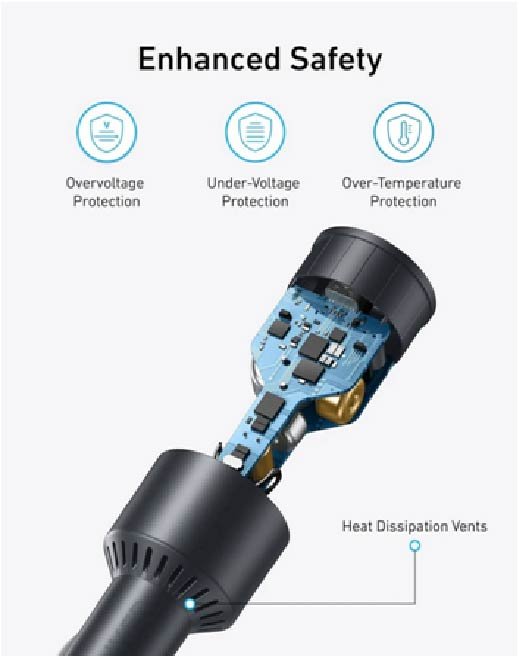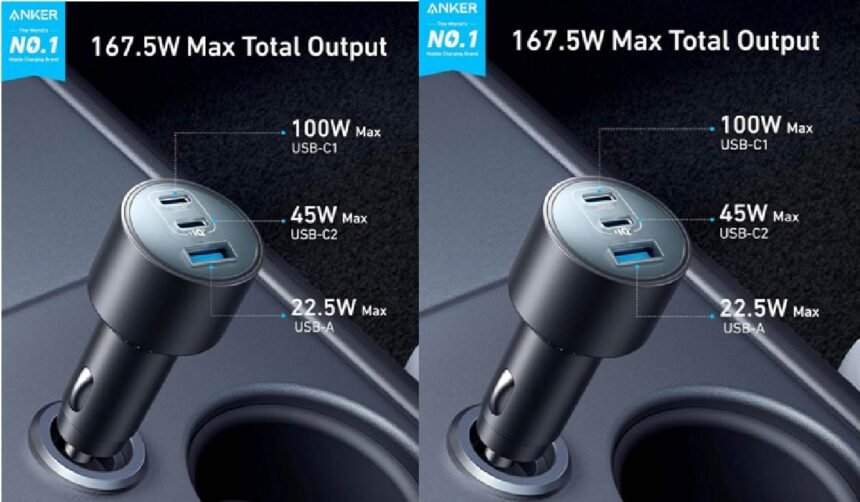A quick car charger can transform the way people stay connected while traveling. Many gadgets feature USB-PD 3.0, PPS, and Qualcomm Quick Charge technology. These needs necessitate chargers with high power, precise voltage and current, and reliable operation. Drivers who use GPS, streaming, video calls, or emergency alerts need a charger that will not overheat or harm their devices. A decent auto charger provides optimal currents via high-quality ports while remaining quick, safe, and long-lasting. Identifying what makes a charger fast and dependable allows buyers to choose between numerous “quick charge” choices.
Why Fast Charging Matters in 2025?
Increasing Device Demands
Smartphones, tablets, computers, and wearable technology all consume more power than basic products did previously. High-resolution displays, always-on GPS services, and power-hungry apps increase battery depletion. Users plug in gadgets not just to recharge batteries, but also to maintain top performance while driving. For example, GPS apps and rear-seat entertainment systems may function simultaneously. Without a quick vehicle charger, electronics may charge slowly or overheat. Fast charging guarantees your electronics remain usable during travel. When the car charger meets higher demand, customers do not have to worry about running out of battery, and gadgets continue to function normally.
Time Efficiency
Drivers frequently have limited time to plug in equipment. Morning commutes, brief errands, and road vacations have limited charging time. Waiting hours is unreasonable; quick charging reduces downtime. When a charger provides a full or near-full charge in minutes, customers may leave the car with the battery secure. This is especially important for professionals who rely on gadgets for business calls or navigation. Fast charging also promotes emergency preparedness: the phone must have an adequate battery in case the user has to contact for assistance. Car chargers that function effectively help users save time and avoid being tethered to power outlets.
Advancements in Charging Technology
Recent upgrades increase charging power limitations and smart capabilities. USB Power Delivery (USB-PD) and PPS protocols provide dynamic voltage and current control. Gallium nitride (GaN) power stages improve efficiency and minimize heat. Smart chips monitor temperature, current, and voltage to keep gadgets safe. Some chargers have numerous ports that balance power automatically. Wireless charging stations in automobiles get more power and safety features. Manufacturers change firmware to prevent overshoot and undervoltage. These technical advancements mean that auto chargers in 2025 can safely push 30-65 watts or more in real-world driving circumstances while maintaining battery health.

Top Features to Look for in the Best Car Chargers for Fast Charging
Charging Speed and Compatibility
Choose a charger that supports numerous fast-charging protocols, including USB-PD, PPS, Quick Charge, and even proprietary systems. Check the maximum wattage given by each port. Dual-port chargers should balance power while both ports are active. Ensure that USB-C ports are there, as many products require them for maximum speed. Match the charger’s output to the device’s input capacity; utilizing a high-watt charger will be ineffective if the gadget caps at a lower wattage. Also, check voltage ranges and make sure wires can handle the appropriate current. Trucks and heavier vehicles benefit from compatibility with 12-volt and 24-volt automobile systems.
Safety Features
A rapid charger must prevent overcurrent, overvoltage, overheating, and short circuits. Look for integrated temperature sensors and automated shutdown. Certifications such as UL, CE, and FCC demonstrate conformity with safety requirements. Surge prevention prevents voltage spikes caused by alternators or power fluctuations. Fire-retardant materials decrease danger in severe environments. Overload prevention protects against harm caused by plugging in several devices. Safe contact points and insulating structures reduce the risk of electric shock. Users should look for chargers with feedback or LED indications that display working status. Reliable safety designs enhance the life of the equipment and provide user protection.
Durability and Build Quality
Aesthetic design matters, but build materials endure real wear, especially for a car phone charger that faces constant movement and vibration. Metal housings or reinforced plastic can withstand heat and vibration from driving. Ports must securely hold plugs; loose connections degrade performance. Overheating can be avoided with adequate ventilation or heat-dissipating equipment. Internal soldering and components must fulfill quality specifications. Waterproof or moisture-resistant seals are useful in humid or wet environments. Cable strain relief helps prevent fraying at connection ends. Lightweight designs are important for mobility, but durability must not compromise performance. Physical robustness provides long-term, quick charging without performance or safety issues.
The Best Car Chargers for Fast Charging in 2025
The Anker Car Charger (167.5W, 3 Ports) is one of the most powerful and versatile solutions available to drivers in 2025. Its first USB-C connector has an ultra-fast 100W output, which can charge a 16-inch MacBook Pro to 50% in less than 50 minutes. The second USB-C connector produces 45W, making it excellent for charging iPhones, Samsung devices, or tablets, while the USB-A port delivers 22.5W for smaller devices. This charger is compact but powerful, and it fits perfectly in any automobile without clutter. Built-in safety safeguards safeguard against overheating and overvoltage. It’s ideal for commuters, tourists, and professionals alike, with universal compatibility, a sturdy structure, and simultaneous charging for three devices.
Conclusion
Finding the finest vehicle charger for quick charging requires striking a balance between durability, safety, and speed. Fast power-ups are ensured by a charger that meets device restrictions, supports key charging protocols, and offers high watts across ports. Devices and users are protected by safety features, and performance is maintained by sturdy construction and design. Give top priority to a charger with reputable certifications and dependable parts. A high-quality charger becomes crucial as devices require more power and drivers require efficiency. A high-quality quick auto charger shields electronics, keeps gadgets ready, and avoids interruptions. Making informed decisions will improve the power, safety, and smoothness of your trip.









